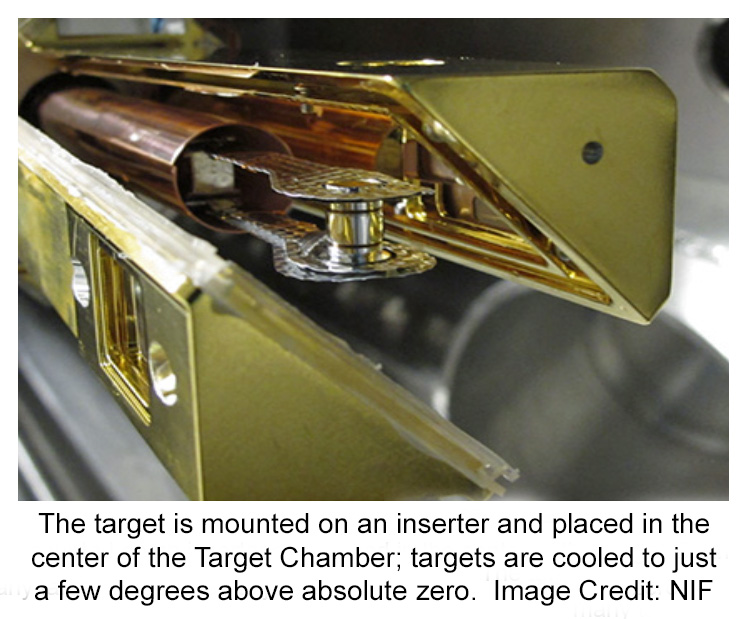

Nuclear Fusion: On the Cusp of an Energy Revolution
November - December 2023
Nuclear fusion is not the same as nuclear fission. Nuclear powerplants today create energy by nuclear fission which occurs when a large Uranium atom is split into smaller atoms. This nuclear reaction releases a tremendous amount of energy, dangerous radiation and nuclear waste which is difficult to safely store. Nuclear fusion occurs when two light hydrogen atoms fuse together and form one heavier helium atom. This nuclear reaction actually releases even more energy than fission without creating dangerous bi-products.
Our sun is powered by nuclear fusion and it has been the dream of scientists for decades to harness this process here on earth. The question is how do you create, here on earth, the temperatures and pressures that one finds on our sun? Our sun was created from vast amounts of nebula hydrogen gas clouds and dust that coalesced together. To become a star our sun had to become large enough so its gravity was intense enough to trigger hydrogen fusion. The only bi-product of hydrogen fusion is helium and our sun today is a giant ball of hydrogen and helium.
Because of recent breakthroughs it is clear that scientists and engineers are getting close to being able to duplicate the fusion engine of our sun here on earth. On December 5, 2022 the dream of fusion power took a major step toward becoming reality. This achievement took place at the National Ignition Facility (NIF) which is located at Lawrence Livermore National Laboratory in Livermore, California. For the first time in history a controlled fusion experiment achieved thermonuclear fusion where more energy was created than consumed in the process. To achieve fusion 192 lasers heated a tiny hydrogen capsule, for a split second, see photo 1, to the extreme temperature of our sun. The fusion reaction, though it only lasted a few seconds, created more energy than what was needed to fire the lasers. This video will visually show how they achieved this breakthrough and it makes sense for you to watch it online rather than for me to describe step by step the complexity and physical size of the facility (https://www.youtube.com/watch?v=2kh6Ik4-yag).
To sustain fusion using the system that the NIF scientists have created, they will need to create a manufacturing process that can quickly create the hydrogen isotope beads. A feeding system that can send these beads into the correct location at a speed of ten beads per second. Have the electric power to fire the 192 lasers ten times per second without stopping or experiencing component failure. Build the steam generators and all the support equipment necessary to turn the released energy into electricity. Solving the above problems is meaningless if a containment structure is not built that can contain the generated heat and energy that the fusion reaction would create. There is no solid material on earth that can withstand the temperatures that are created by nuclear fusion.
SPARC tokamak is an MIT spinoff and their physicists first worked out a torus shaped containment structure, see photo 2, that uses super magnets for plasma confinement and to control the fusion of two hydrogen isotopes; deuterium and tritium. Their test reactor is expected to be completed in 2025. Sea water contains lots of deuterium and tritium can easily be created by exposing the element lithium to the neutrons in the SPARC tokamak plasma.
Plasma is another form of matter. The most common forms of matter are solids, liquids and gas. If you super heat gas it turns into a plasma and the SPARC plasma will be so hot that the deuterium and tritium hydrogen atoms will break down into a soup of hydrogen charged particles. At a temperature of over 100 million degrees these charged particles will achieve thermonuclear fusion creating helium and releasing a fantastic amount of energy. This video should further your understanding of what SPARC is trying to achieve https://youtu.be/2AjO-EWa734.
For fusion to become a reliable method of generating electricity scientists and engineers need to move past successful ignition and build a system that can generate a sustainable reaction including the generators that can turn the created energy into electricity.
Taking it a Step Further
How are these two approaches to creating fusion the same and how are they different?
What advantage would nuclear fusion energy production have over current wind, solar and nuclear fission?
Student STEM projects could range from creating posters to building models that uses electromagnetism in creative ways.


